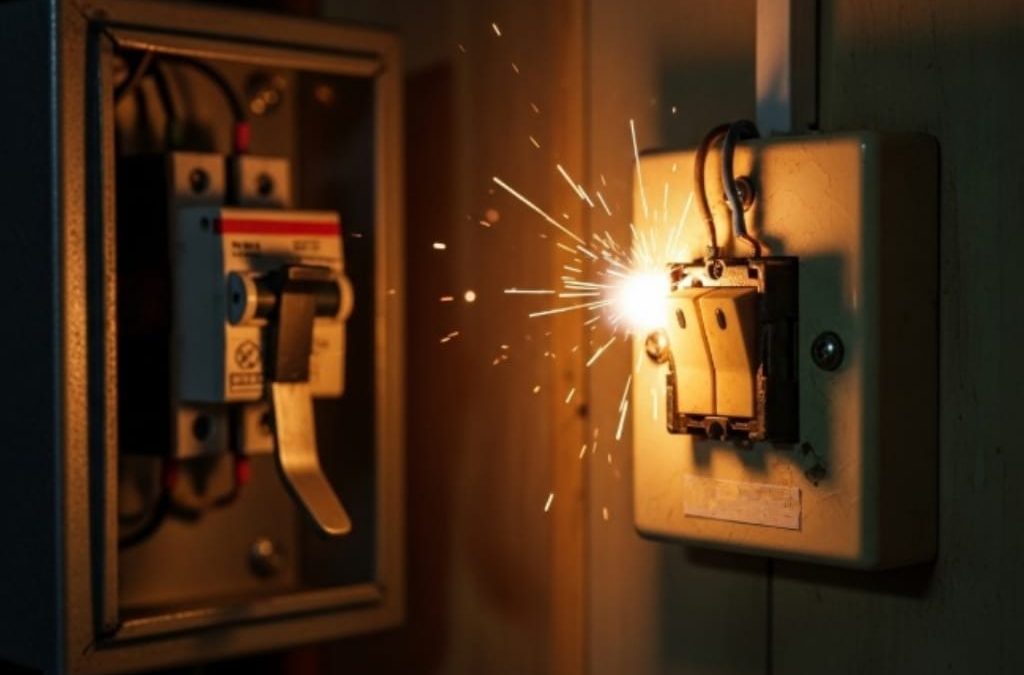The electrical system of your home functions as a quiet network of wires, switches, and circuits that you depend on daily. Although a total power failure is a clear indication of an issue, many electrical problems begin in a more understated manner. Disregarding these initial warning signs is not merely an inconvenience; it can present a significant safety hazard, including the risk of electrical fires.
As experienced electricians, we have observed how minor issues can escalate into major catastrophes. Below are five subtle yet essential indicators that your home’s electrical system may require professional attention.
1. Flickering or Dimming Lights
It may appear to be a scene from a film, yet in truth, a flickering light is not merely a trivial inconvenience. This phenomenon frequently indicates an overloaded circuit, a loose connection within the wiring, or an issue with the light fixture itself. Although it might be as straightforward as a loose bulb, it can also suggest that a circuit is having difficulty managing the electrical load, posing a potential fire risk. Be vigilant if the dimming occurs when you activate a large appliance.
2. Warm or Discolored Outlets and Switches
Your electrical outlets and switch plates must consistently remain cool to the touch. Should you detect any warmth or observe discoloration, scorch marks, or charring, it serves as a significant warning sign. The presence of heat indicates a potentially hazardous level of resistance within the wiring, which may be attributed to a loose connection or arcing. This situation poses a genuine fire risk and necessitates prompt professional evaluation.
3. Breakers That Trip Frequently
A circuit breaker is intended to trip and disconnect the power supply when it identifies an overload or a short circuit. This serves as a safety mechanism. Nevertheless, if a particular breaker trips often—such as every time you operate your microwave and toaster simultaneously—it is more than just a nuisance. It indicates that the circuit is regularly being required to manage more power than it was engineered to accommodate. Although this is the function of the breaker, neglecting the underlying issue may result in the breaker ultimately failing, thereby leaving the circuit vulnerable.
4. Strange Burning Smells
A burning odor is arguably the most critical warning indicator of an electrical issue. If you detect a burning, acrid, or plastic-like scent emanating from an outlet or switch, it likely indicates that the wire insulation or components are overheating and melting. This represents a high-risk scenario that necessitates the immediate disconnection of power to the circuit and contacting a qualified electrician. Refrain from using the outlet or fixture again until it has been thoroughly inspected.
5. The Age of Your Home’s Wiring
The electrical system of your home, similar to other components, has a finite lifespan. If your residence is 40 years old or more and has not undergone any electrical upgrades, it is probable that the wiring does not conform to contemporary safety standards. Homes of an older vintage may possess outdated systems such as aluminum or knob-and-tube wiring, which can pose a considerable fire risk, particularly when attempting to meet the electrical requirements of modern appliances and electronics.
Conclusion
The electrical system of your home should not be overlooked. Although a flickering light or a tripped breaker may appear trivial, they frequently indicate a more significant problem. Recognizing these subtle indicators is the initial step towards enhancing the safety of your home. For any of these concerns, seeking a professional inspection is the most effective method to guarantee the safety and dependability of your electrical system.

